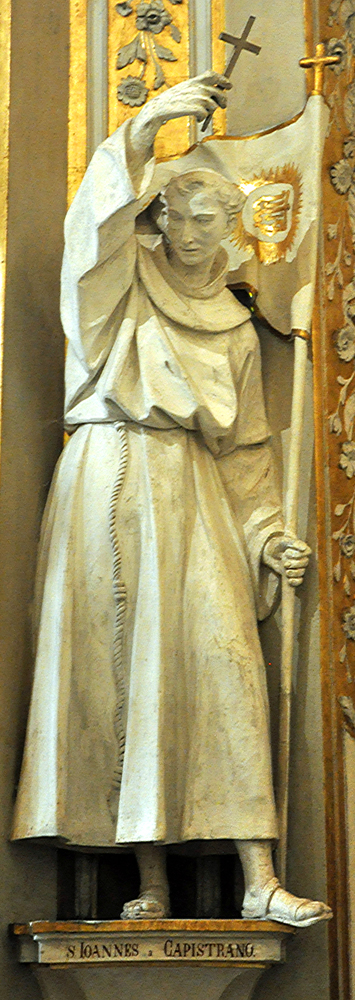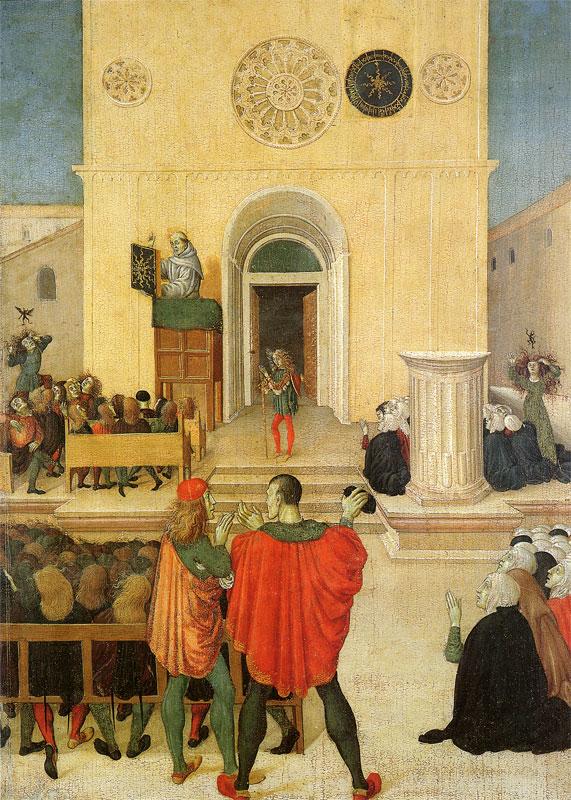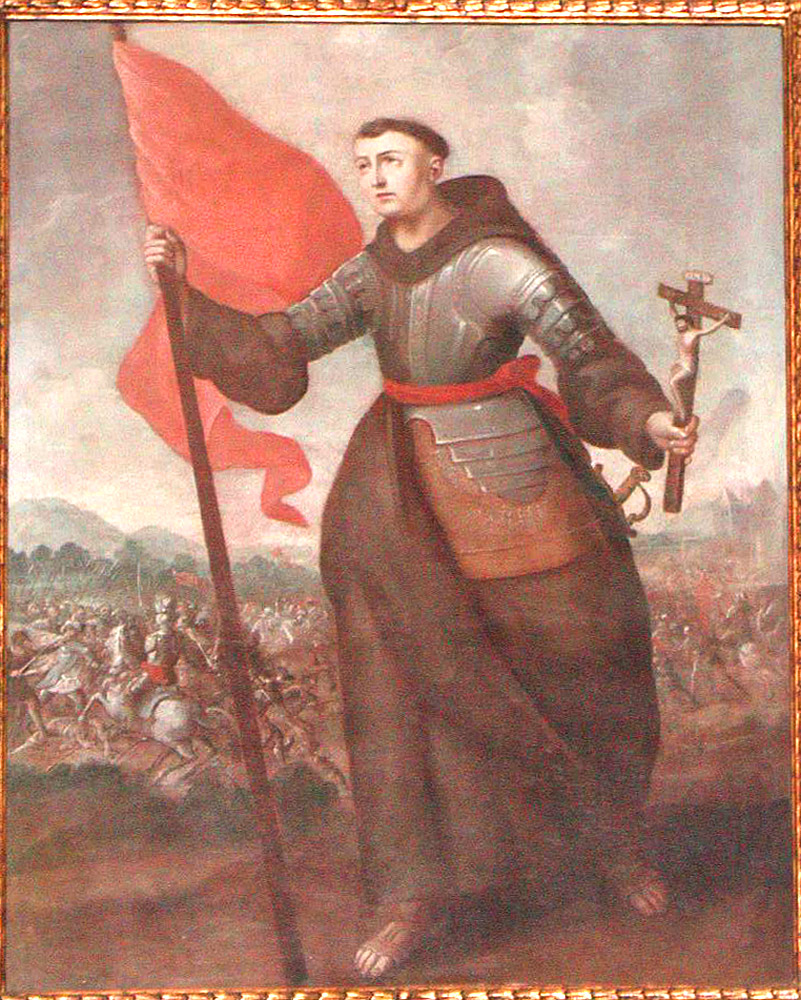In the images the device on the banner is most often a large red cross or a form of the ihs sunburst seen in images of St. Bernardino. The banner is an important feature of the Capystranus, a Middle English romance of the late 15th century. In it the Pope approves Capistrano's proposal to raise an army against the Turk and tells him to choose a "captain" for the expedition. The friar says he wants his "captain" to be "a banner of Christ's Passion, he who redeemed men's souls and brought them from pain to light." The banner is made and as he travels with it to Hungary thousands of men join him, inspired by the banner and by his preaching. Then at the battle he blesses the troops and declares, "Our banner shall I carry today, to prosper us in our rights."2
In the Church of St. Bernardino in Kraków the banner bears a white eagle on a red field, the coat of arms of Poland.
The other type of portrait (second picture at right) has the saint preaching to a crowd while holding out to them a monstrance An open or transparent receptacle in which the consecrated Host is exposed for veneration – Google Definitions , a sunburst device, or some such symbol of Jesus. This second type of iconography is based on St. John's enormous popularity as a preacher. In Italy vast crowds would flock to hear his sermons, and towns would vie with each other in inviting him (Ibid., 693-94).
In both types of image the saint will be wearing the typical gray or brown Franciscan habit with the triple-knotted rope cincture.
Prepared in 2017 by Richard Stracke, Emeritus Professor of English, Augusta University. Revised 2021-08-11.

The first type of John of Capistrano iconography: The saint holds a cross or crucifix in one hand and a banner in the other. (See the description page)

The saint preaching as demons take flight from members of the crowd (See the description page)

The saint at the Siege of Belgrade (See the description page)
ATTRIBUTES
- Banner topped by a cross
- Cross or crucifix in hand
- Plaque with a symbol of Jesus
DATES
- Lived 1386-1456
- Died on October 23. The Franciscans celebrated his feast on that day until 1890. Then the Roman church set March 28 as a feast to be celebrated generally throughout the Catholic world.
NAMES
- In Spanish, San Juan Capistrano, which is also the name of a city in California where the Franciscans established a mission in 1776.
BIOGRAPHY
- Butler, I, 693-94
NOTES
1 The Mission San Juan Capistrano in California has a painting that is of this type, but with a sword instead of the traditional cross or crucifix. See (Neuerburg, 9).
2 Capystranus, 5-7 (my translations).
To allay any sense of scandal that a friar should lead men to battle the work begins with "the Turk" attempting to make "The Emperor of Constantine" renounce Christ by a sequence of hideous tortures.